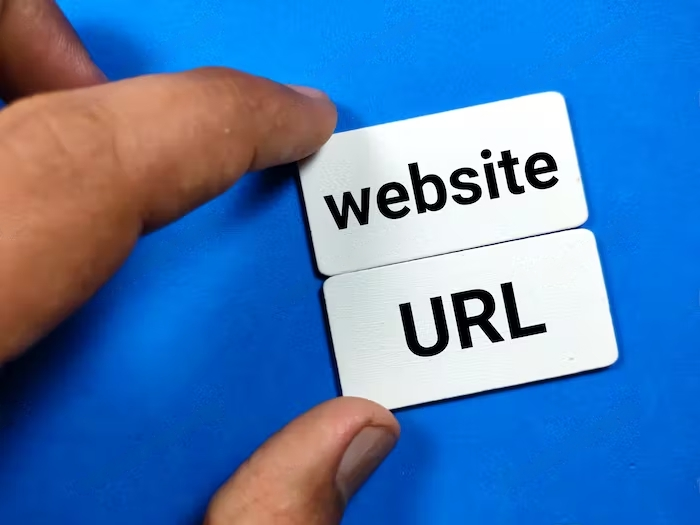A Quick Insider On SEO Links And Their Importance
Internal SEO is a very important aspect of online content marketing. You can increase your search engine visibility and ranking by improving your website’s link profile.
Link building is a very important part of SEO, and improving your link profile will help you get more clicks, leads and orders.

Why Are Links Important To Google Search Console?
Google has been around for over a decade, and it is one of the most popular search engines in the world. People can find almost anything they want to know about through its search engine.
Additionally, Google allows users to see what others have searched for and what pages are clicked on the most on the site.
Overall, links are very important to Google’s search console. Not only do they help people find what they’re looking for, but they also help promote products or websites.
Without links, Google would be much less able to exist as a popular search engine.
Why Is Link Building Important for SEO?
There are countless reasons why Link building is so important for SEO purposes.
First and foremost, Link building helps to improve website visibility. The more links your site has, the more likely it is to be found by Google and other search engines.
Additionally, link building can also help to increase organic traffic from search engine results pages (SERPs). Organic traffic is generated when people visit a website without being directed to an important page or product.

Setting Up An Internal Linking SEO Strategy
Here are some things you need to know when setting up an internal linking strategy for SEO.
Determine The Ideal Structure For Your Site
Internal linking is a key way to improve SEO. It allows users to connect to other websites from your site, resulting in increased clickthrough rates and better visibility for your site.
Unfortunately, setting up an internal linking strategy can be difficult.
We recommend using a well-planned URLs matrix to help you create the perfect structure for your site. This tool will help you determine the best links between your website and related websites.
The matrix should include all of the website’s pages and any pages that reference other websites.
Once you have created a good URL structure, it’s important to determine the specific structure for each important page on your site. You should use a hierarchical order for each section of your site so that visitors find their way quickly and easily to what they need without having to search around.
Link Hierarchical Pages
Creating a link hierarchy is a process that requires time and dedication.
The best way to start is by creating a list of all keywords for which you want to rank higher. Once you have this information, it’s time to create targeted links to those keywords on your website.
Start by targeting the most popular keyword phrases related to your topic, then target thematically with other categories such as title tags and meta descriptions.
Add Contextual Links
Setting up an SEO strategy for a company is all about utilising the correct SEO tactics and working with a professional to help optimise your website. A link from your website to external websites is essential for optimising your visibility, building trust, and growing traffic.
However, you don’t have to go through the hassle of setting up an external link management system to achieve these goals. You can use contextual links instead.
Contextual links are links placed within articles or other content on a website to provide additional information, tie in with another story feature, or simply add value.
By placing contextual links within your website, you can ensure that everyone who visits it sees the most relevant content and reaches their destination more effectively.
Consider Adding Links To Popular Posts
Adding links to popular posts can help improve your web page’s visibility while promoting your content.
Popular blog posts are regularly updated and contain valuable tips and information that might interest your audience.
By linking to these posts, you can provide a comprehensive resource for your readers and help improve the search result ranking of your site.
One way to set up an internal linking SEO strategy is by visiting popular blog sites and adding them as links from your web page.
This will allow you to get the most out of your site’s search engine results pages (SERPs) and promote your content more effectively. You’ll also be able to track which blogs are being visited the most, so you can adjust your strategy accordingly.
Try Adding Navigational Links.
Another way is by adding navigational links. By adding links to other pages on your site, you can direct your readers towards related pages or articles they may have missed while searching for something specific.
Adding these links can help you achieve high rankings in search engine results pages (SERPs) and increase website traffic.
Add Links To Your Taxonomies
Internal linking is a great way to improve website traffic and SEO.
Adding links to your taxonomies can easily point customers in the right direction for more information on what you sell or services.
This helps your customers find the information they need quickly and easily and makes it easier for you to track how well your website performs.
Conclusion
There is no doubt that SEO is an important aspect of online content marketing.
You can improve your website’s visibility and potential customers by having good content links.
While it can be difficult to determine a particular link’s importance, it is essential to consider all factors when optimising your website for search engine optimisation (SEO).
Was this article helpful? Let us know in the comments.
FAQ
How is an Internal Link different to an External Link?
Internal Links are typically placed in the content of a document, whereas External Links are placed outside of it.
Internal Links usually lead to other pages or documents within the same site, whereas External Links often take you to different sites or pages.
Internal Links can be very useful when referring people to specific pages or documents on the site. In contrast, External Content links can be more useful when you want to share a document or story with someone else.
What is an external linking strategy?
External linking strategies are a way of building trust with potential or current customers.
They can also help increase website traffic or sales. Using external links, you can reach a larger audience than you would if you only had your website.
External links also help build confidence within your customer base, leading to increased conversion rates and more business for you.
How do you find internal linking opportunities?
Finding internal linking opportunities is important to finding an effective business strategy. It can help you connect with potential customers and partners and ensure that your products and services are well-represented in the market.
When looking for links, it’s important to focus on words people often use within their fields or industries.
For example, if you’re looking for external links to articles about your subject matter, try using Google Street View or mapping software to search for businesses within your area that have had similar success with their products or services.
References and Citations:
https://yoast.com/internal-linking-for-seo-why-and-how/
https://ahrefs.com/seo/glossary/external-link#:~:text=Also%20known%20as%20an%20outbound,sometimes%20called%20external%20incoming%20links.
https://www.google.com/streetview/




